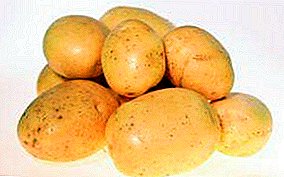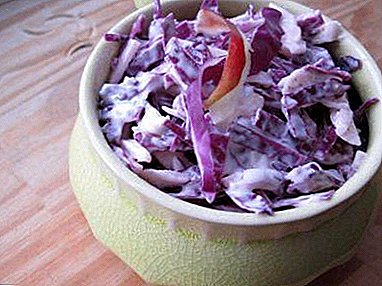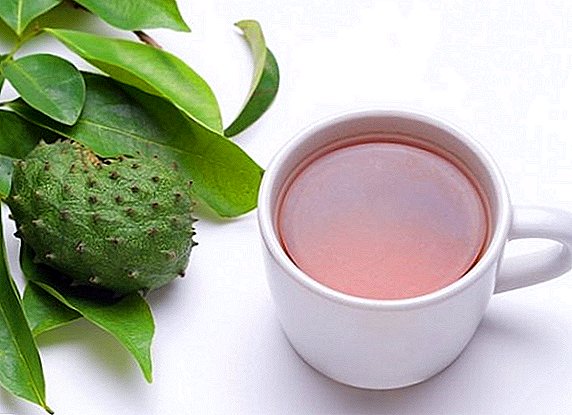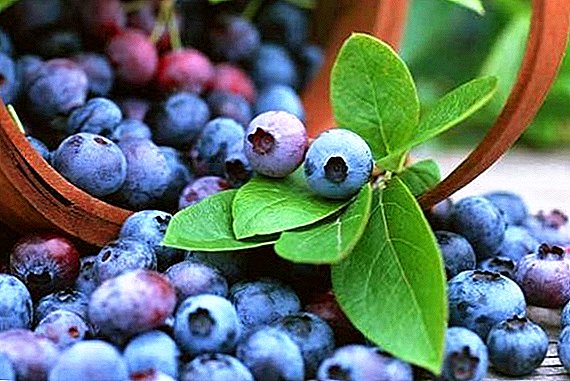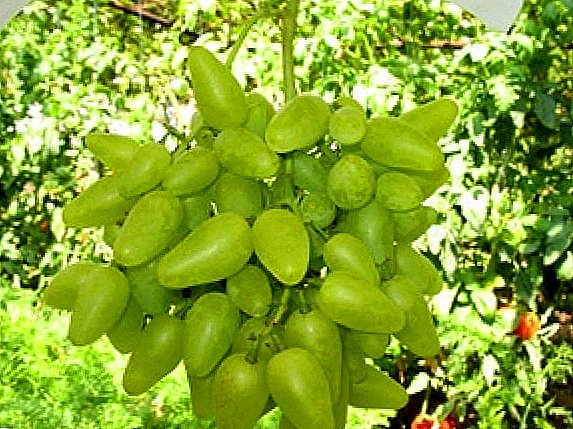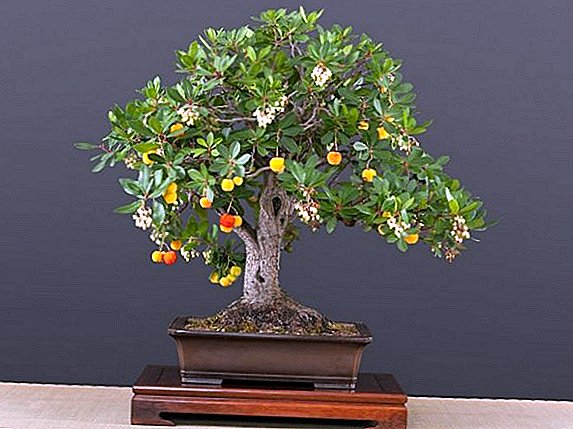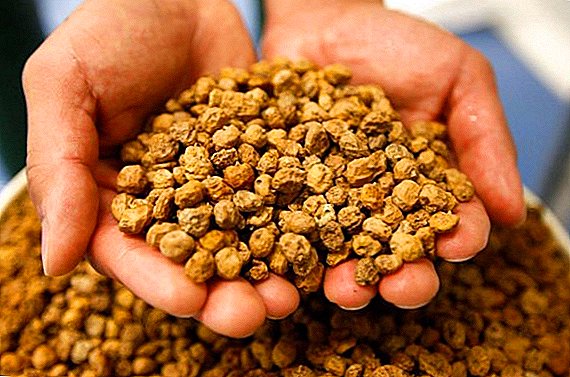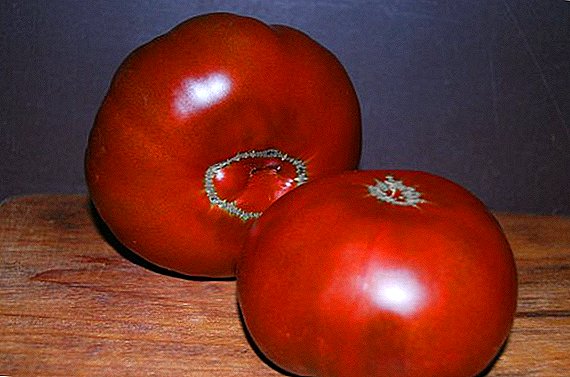 Tomato "Cherokee" (original name - Cherokee) - a long-loved hereditary variety that has proven its worth and versatility. The tomato is originally from the USA - it was cultivated by the Cherokee Indians more than 100 years ago. Cherokee is deservedly the title of king of the garden. This is a revered by many vegetable for cooking hamburgers, salads, pickles, and just fresh. Giant tomatoes, Cherry, cream, black, chocolate, pink, purple, white - in a huge variety of tomatoes for everyone will certainly find a favorite variety, or even more than one.
Tomato "Cherokee" (original name - Cherokee) - a long-loved hereditary variety that has proven its worth and versatility. The tomato is originally from the USA - it was cultivated by the Cherokee Indians more than 100 years ago. Cherokee is deservedly the title of king of the garden. This is a revered by many vegetable for cooking hamburgers, salads, pickles, and just fresh. Giant tomatoes, Cherry, cream, black, chocolate, pink, purple, white - in a huge variety of tomatoes for everyone will certainly find a favorite variety, or even more than one.
Variety description
Tomato "Cherokee" is a tall indeterminate shrub in height from 1.2 to 2 meters. Sheet plate conventional type. Brush branched, complex type. The plant forms up to 8 brushes. About ten heart-shaped fruits form in one hand. The variety has many advantages, among them - high yield, wonderful fruit taste, resistance to diseases.  The grade practically has no individual shortcomings. Like most tomatoes, Cherokee can be affected by diseases, pests, and other growing problems. A distinctive feature of this exotic tomato in front of other varieties is that the Cherokee fruits have a very dense sugary flesh and a small amount of seeds.
The grade practically has no individual shortcomings. Like most tomatoes, Cherokee can be affected by diseases, pests, and other growing problems. A distinctive feature of this exotic tomato in front of other varieties is that the Cherokee fruits have a very dense sugary flesh and a small amount of seeds.
Fruit characteristics and yield
"Cherokee" - medium-early high-yielding variety. The term of vegetation (ripening) is 90-115 days. The yield of the variety is more than 4 kg of fruits from 1 bush. The fruits are multi-chamber, large, flat-circular (heart-shaped), in the stage of maturity have a unique color (from yellow to violet-purple). The average weight of one fruit is 250 grams. Depending on the variety and growing conditions, there are specimens from 150 to 400 grams, as well as record-breaking tomatoes weighing 500 g.
Did you know? Approximately 95% of tomato weight is water.Cherokee is one of the tastiest tomatoes in the world. Tomatoes are fleshy, juicy, have a wonderful complex smoky aroma and light sweet aftertaste. Taste characteristics and aroma completely revealed at full maturing of fruits on a bush. Tomatoes unusual for cracking.

Selection of seedlings
High-quality seedlings of tomatoes "Cherokee" choose by external signs:
- The optimal length of seedlings should not exceed 30 cm. In addition, there should be about 10 true leaves on the stem.
- Young plants should be no more than 45-60 days. For planting on one bed, it is desirable to choose plants of the same age in order to obtain uniform growth of all the bushes and simultaneous ripening of fruits.
- The seedlings should have a thick stem, and all the leaves should be painted green. The rhizome should be well formed, without obvious damage.
- Check whether the plants are infected with infectious diseases and there are no parasitic insects (Colorado potato beetle) under the leaves. Deformed and shriveled leaf blades can speak about the infection of seedlings. There should be no black or brown spots on the stem. If there are signs of diseases or parasites on at least one sample, then it is better to refuse to purchase any seedlings from such an unscrupulous seller.
- Sometimes gardeners grow seedlings for sale by an intensive method, saturating the plants with a large amount of nitrogen supplements. The fact that there has been such an accelerated growing is indicated by very bright green leaves, which are twisted inwards.
- Seedlings should be lively (not lethargic). Plants should be sold in containers with the ground, and not in packages.

Soil and fertilizer
American tomato prefers a light soil with a high content of nutrients. To minimize the risk of disease, tomatoes should not be planted in the place where in the past years potatoes, eggplants, peppers and other solanaceous crops grew. Open ground for “Cherokee” is desirable to prepare in the autumn, carefully digging the ground and generously tucked it with organic matter. Add garden compost, crushed eggshells and ash.
We grow tomatoes in the greenhouse and in the open field.
Tomatoes also react positively to a high content of nitrogen and potassium and prefer a slightly alkaline soil, which is uncharacteristic for most vegetables. The recommended reaction should be in the range of 6.5-7.0 pH (the indicator is allowed and slightly higher). In this case, the ideal organic fertilizer is wood ash - it has an alkaline reaction and contains potassium. In the spring, as soon as the earth dries out, once again loosen and level the ground with a rake or a manual cultivator - this contributes to the preservation of moisture and the destruction of weeds.  Here are some examples of soil mixtures that are perfect for growing seedlings:
Here are some examples of soil mixtures that are perfect for growing seedlings:
- 1 part of sod land, 1 part of humus, 1 part of black or pressed peat, wood ash (based on 1 bucket of soil mixture 0.5 liters of ash), superphosphate (2-3 tbsp per bucket of substrate) and water for moistening the mixture;
- 1 part of garden soil, 1 part of river sand, 1 part of black or pressed peat (you can replace with compost), an aqueous solution of mineral supplements (in 10 liters of water mix 20 g of potassium sulfate, 10 g of urea and 30 g of superphosphate).
Growing conditions
Cherokee tomato is a thermophilic and light-loving plant. The ideal temperature for open cultivation is + 20 ... +25 ° C during the day and + 18 ... +20 ° C at night. Sharp temperature fluctuations are contraindicated. After planting seeds for seedlings, the pots are kept in a bright, warm place where the temperature does not fall below + 22 ° C. A similar temperature is required for tomatoes when cultivated in a greenhouse. In addition, the land for planting tomatoes, Cherokee should be as much as possible illuminated by sunlight. To grow tomatoes indoors or in the greenhouse will help LED energy-saving fitolampy. As for air humidity, the optimal percentage is 60-70%.
Did you know? The first description of tomatoes in Europe dates back to 1555 and was made in Italy, where the vegetable was nicknamed "honey dear" - the "golden apple".
Growing from seed to seedlings at home
Good harvest "Cherokee" depends on how well the seeds are selected, and how well the seedlings are grown. The following recommendations will help grow tomato seedlings in such a way that your efforts are justified. 
Seed preparation
Try to sort out the seeds, discarding empty, small and deformed samples. You can dip the seeds for 5 minutes in salt water. The emerged raw materials can be considered as waste, and collect the ones that have fallen to the bottom for further processing. Rinse the healthy seeds with clean water, then dip them into a warm, weak solution of potassium permanganate (potassium permanganate) for 15 minutes to disinfect. To completely wash out the potassium permanganate, rinse the seeds thoroughly under running water. To improve seed germination, warm them in hot water for a couple of hours or lower the bag of seeds in a thermos.
Check out the top 10 sweetest tomato varieties.
It is also desirable that the seeds undergo a hardening procedure. This will help them to acquire resistance to low temperatures. To this end, it is enough to transfer the swollen seeds in the refrigerator for 1-2 days. After all the procedures done, the seeds are ready for sowing. However, on the eve of the planting works, it is advisable to additionally hold them for 12 hours in a solution of mineral supplements (in specialized stores you can find ready-made trace elements in tablets), and then slightly strain.

Content and locations
Seeds require a bright warm place where the temperature does not fall below + 22 ° C. As for the capacity for growing seedlings, then fit a variety of pots or boxes - peat, paper, plastic, clay, ceramic. Today is very popular so-called "cassettes" for seedlings. They enable compact and in a small room to grow a large number of young plants. A very convenient option is a plastic cup with a split bottom. In addition, the glass up is slightly widened. When it comes time to replant the seedlings, simply press the bottom of the bottom, and the lump of soil is easily squeezed out.
Important! Do not forget to disinfect containers. This applies even to new containers, not to mention those that you use is not the first time. Soak the pots in a strong solution of potassium permanganate for 30 minutes, then rinse with clean water.
Seed planting process
Planting seeds of American tomato, do the following:
- Moisten the prepared soil mixture slightly and disperse in the containers selected for seedlings. Smooth and slightly compact the soil.
- In each pot (in the ground) make shallow grooves (1 cm) - the depth of immersion of seeds in the substrate should not exceed one centimeter.
- Immerse the seeds in the resulting wells (3-4 pieces at a distance of a couple of centimeters from each other).
- Sprinkle the planted seeds with the substrate and moisten the surface of the earth with a spray.
- Cover the pots with film and store them in a bright warm room with a temperature not lower than +22 ° С.

Seedling care
Before the shoots seem, the ground must be maintained in a moist condition at a temperature of 25 ° C. When shoots appear (that is, 7-14 days after sowing), provide them with good lighting. Seedlings should not be over-fed with fertilizers. But the irrigation mode is very important. The first watering is carried out 5 days after germination. Before the appearance of 3 true leaves, water at a minimum (approximately 2 tsp per bush). With the appearance of 6 sheets - half a glass per plant.
Before the picking, 2-3 irrigations are carried out, and after it is watered, the seedlings should be irrigated once a week, avoiding both drying and over-wetting of the substrate. Preparation of seedlings for planting in open ground involves the procedure of "hardening", that is, adaptation to street conditions. During the week, the pots should be carried out at a certain time outside. The hardening process strengthens the plants at the cellular level, reducing shock and sunburn during transplantation. 
Important! During the hardening period, the sun, wind and low temperatures are especially dangerous for seedlings. Therefore, pots should be placed in a place protected from these factors.
Transplanting seedlings to ground
The optimal timing of planting seedlings "Cherokee" in the ground - the end of March and the whole of April. Seedlings are ready for planting in open ground when they have formed 3 pairs of leaves. Seedlings preferably planted in rows. The distance between the bushes should be 75-100 cm, and between the rows - 1-1.2 m.
Check out such varieties of tomatoes as Labrador, Eagle Heart, Eagle's Beak, President, Klusha, Japanese Truffle, Primadonna, Star of Siberia, Rio Grande, Rapunzel "," Samara "," Sevryuga "," Rio Fuego "," Evpator "," Openwork F1 "," Explosion "," Casanova "," The King of the Early "," Lyubasha "," Collective Farm Yield "," Honey Spas "and" Gigolo ".
Seedling plan:
- Dig deep enough holes to allow the root system to freely fit there.
- Remove the plant from the pot carefully, supporting the root with the hands of the earth.
- Dip tomatoes into the soil until the first set of leaves. The deeper the stem is planted, the more roots are formed, which provides the plant with resistance and improves its ability to absorb nutrients.
- After you have placed the plant in the hole, cover it with earth and press down the soil with your hand.
- Around each bush form a small depression for watering.
 Watering the plant after planting will create conditions for close contact of the root system with the ground and rapid engraftment. In order to support tall shrubs, you can use pegs by tying a stalk to them at a height of about 15 cm.
Watering the plant after planting will create conditions for close contact of the root system with the ground and rapid engraftment. In order to support tall shrubs, you can use pegs by tying a stalk to them at a height of about 15 cm.Agricultural technology of growing tomato seeds in the open ground
Seedless cultivation of tomatoes "Cherokee" in the open field has its own characteristics and difficulties. In the first 10-15 days with seeming shoots there will be a lot of trouble.
Read also about how to feed the tomatoes, how to properly store them and how to prepare for the winter.
Outdoor conditions
To begin with, let us clarify that in areas with a cold climate, with open cultivation, tomatoes will not develop properly - they will not have enough heat. Therefore, in this case, the choice of the greenhouse is justified. Another important difference between a greenhouse and open growing is that the greenhouse makes it possible to get a harvest all year round.
But if weather conditions allow (in the southern regions), it is better to grow tomatoes openly. After all, there is no point all summer to keep the tomatoes in the greenhouse - they need the natural environment and watering with rain. You can, of course, select a small bed in the greenhouse and sow the seeds for shelter, but this will be more likely a way to get hardened seedlings for transplanting into open ground. Therefore, we will further consider planting the Cherokee seeds directly in open ground, but at the same time we will take care to provide planting shelter.  Regarding the location of the beds, the choice should be made in favor of the southern slopes of the backyard. If your land plot has even relief, it is advisable to equip the beds in places where the spring winds do not penetrate or where special protection is built against them - a solid fence of average height will do. The optimum width of the beds - about 1 meter. The soil should be rich in organic matter and sufficiently moist.
Regarding the location of the beds, the choice should be made in favor of the southern slopes of the backyard. If your land plot has even relief, it is advisable to equip the beds in places where the spring winds do not penetrate or where special protection is built against them - a solid fence of average height will do. The optimum width of the beds - about 1 meter. The soil should be rich in organic matter and sufficiently moist.
The process of planting seeds in the ground
Sowing seeds in open ground begin in early May, when the earth warms up.
Learn tomato is a berry, fruit or vegetable.
Step-by-step process of planting seeds "Cherokee":
- Make small indentations (about 1-1.5 cm) at a distance of 30-50 cm from each other.
- Before sowing, fill each well with water or a solution of potassium permanganate. It is desirable that the water was warm.
- Place 4-5 seeds into each well, spreading them evenly over the well area (in other words, in a circle).
- Cover with a layer of earth (1.5 cm) and pour with warm water.
 Immediately after sowing, set a glass jar or half a plastic bottle over each groove with seeds. And along the beds set high arc. Cover all the cans on top with plastic film or any available covering material. On top of the equipped arcs also stretch a strong film, pressing it well to the ground from all sides.
Immediately after sowing, set a glass jar or half a plastic bottle over each groove with seeds. And along the beds set high arc. Cover all the cans on top with plastic film or any available covering material. On top of the equipped arcs also stretch a strong film, pressing it well to the ground from all sides.Watering
In open ground do not need to pour water frequently. Tomatoes require rare but abundant watering. The frequency of irrigation and the amount of fluid depends on how quickly the soil dries. The soil should be constantly wet, but not wet. Moistening at intervals once a week is the best option for watering in spring and early summer (provided that there is no rain). If the period of budding and growth of ovaries is dry, the plants especially need regular abundant irrigation.
In the rain, tomatoes do not need watering. In case of strong heat, it is necessary to water the tomatoes every 2-3 days during the daytime. Water under the root and only after the heat subsides, literally before sunset (in the evening the liquid is well absorbed by the root system). Practice drip irrigation technology. With top spraying, it is better to water at the beginning of the day so that the leaves have time to dry before evening.  When the fruits begin to set, the amount of water needed for watering will need to be increased. Irrigate the bushes with warm settled water. In the heat, use water whose temperature is + 18 ... + 22 ° С, and on warmer days take warmer water (+ 25 ... + 30 ° С).
When the fruits begin to set, the amount of water needed for watering will need to be increased. Irrigate the bushes with warm settled water. In the heat, use water whose temperature is + 18 ... + 22 ° С, and on warmer days take warmer water (+ 25 ... + 30 ° С).
Soil loosening and weeding
The soil under the plants should always be loose. Every 1-2 weeks loosen the aisles. To begin to loosen the soil after the precipitation or after each irrigation, in dry weather this should not be done. Loosen the soil near young bushes to a depth of 10-12 cm, then, in order not to damage the root system - up to 5-8 cm.
If the ground is heavy, process it deeper - but only those places where the roots have not yet penetrated. Combine loosening with weeding. Removing weeds is important because throughout the growing season the plant should not be disturbed by weeds that take moisture, space and nutrients.
Masking
Competent staving (formation) of a bush is one of the most important conditions for growing Cherokee. Pinch the side shoots constantly, starting from an early age of the bush. By the time the fruits of the stepsons are ripe, there should be no more. Remove them until the shoots reach a length of 3-5 cm. It is preferable to do this in the morning. In southern sunny areas you can not completely remove the stepsons, just do not tie them up. But in the northern regions of this event is mandatory (leave only 2-3 stalks to each plant). In extreme heat, this procedure can not be.
Garter
Since Cherokee is a tall tomato, it certainly needs to be tied up. When fruits ripen the bushes can not withstand their weight and break. In addition, the fruits lying on the ground are more susceptible to pest attack. От правильной подвязки зависит то, насколько крепкими и устойчивыми к воздействию погодных условий растения вырастут. Томаты на подвязанных растениях получают больше солнечного света и лучше проветриваются.
Будет интересно узнать - зачем подвязывать помидоры.
The most common methods of tomato garters in the open field are: individual supports (pegs), horizontal lanes, net fence, wire frame, pyramidal caps. From the point of view of practicality, as well as taking into account the height of the plant, for the Cherokee grid fence is preferable. In this case, use the grid, pulling it along a row with tomatoes. Plants are attached to the grid with the help of clothespins or twine. 
Top dressing
Feed the plants should be throughout the season, and do it preferably once every 10 days or every two weeks. Feed tomatoes for the first time two weeks after planting. Fertilizers can be used different, the main thing is that they contain less nitrogen than other components. First feed with a solution of mullein (1x10) or chicken manure (1x20). Re-feed with mineral fertilizers (60 g nitrophoska mixed with 10 liters of water). Regarding the amount: before flowering, 1 liter for each bush, after flowering - 2-5 liters. Thoroughly mix the composition and pour under each bush.
Important! Observe the rate of fertilizer and in any case do not overfeed tomatoes with manure, chicken droppings, mineral nitrogen compounds.
Pests, diseases and prevention
No matter how carefully and carefully you take care of the Cherokee tomatoes in the garden, they are not insured against disease and insect parasites. Among the most common and dangerous diseases of tomatoes include late blight, brown spot, fungal infections, summit rot, tobacco mosaic. Among the pests that can attack a Cherokee tomato are whitefly, spider mites, gall nematodes, the Colorado potato beetle, a bear, and tobacco trips.  Phytophthora
Phytophthora
Most of these parasites and ailments are provoked by abundant rains, lack of heat and sunlight, or, on the contrary, significant overheating, untimely and improper irrigation. The combination of cold and rain can be completely detrimental to tomatoes. Observing preventive measures will partially avoid problems.
Learn more about tomato diseases such as Fusarium, Alternaria, Top Rot and Powdery Mildew.
In order to prevent diseases, experts recommend adhering to the following rules:
- observe crop rotation;
- never plant tomatoes next to potatoes;
- quickly and without pity, uproot and destroy tomato bushes affected by diseases and pests;
- observe the conditions of keeping tomatoes in the open ground;
- never work with wet bushes.

Harvesting and storage
Harvesting tomato Cherokee falls in July and September. Shrubs can bear fruit before the onset of autumn frosts. Harvest should be collected regularly (every 3-5 days) to avoid overloading the bushes. Fruits are ready to be harvested when they are fully colored, but still retain their hardness. At the end of the season, when a threat of freezing occurs, you can collect fruits in a semi-ripe condition. After harvesting, tomatoes should be laid out on newspapers in a room with moderate room temperature for ripening.
For the purpose of long-term storage, tomatoes should be carefully removed from the bushes along with the stem. Tomatoes of this variety are able to lie for several months. Fruits should be carefully folded up the stalk into wooden or plastic boxes or trays. The vault itself should be dark and cool. The best option is a cellar, basement or shelf of the refrigerator, designed for vegetables. The optimum temperature of the content is + 5 ... +12 ° C with a relative humidity of 80%. Periodically it is advisable to throw away the damaged fruit.

It is necessary to expand the fruit in such a way that they do not touch each other. If you have a small crop and you plan to keep it in the fridge, then after harvesting, the fruit cannot be washed or processed. With regard to long-term storage in the cellar or basement, here the gardeners disagree. But most experienced gardeners have concluded that it is absolutely impossible to wash. The only thing - you can simply wipe each fruit with alcohol.
Important! The leaves and stems of tomatoes are inedible. They should not be offered for food to animals.
Possible problems and recommendations
When growing a tomato "Cherokee" problems such as small fruits, withering foliage, absence and small number of ovaries can be observed. The causes of such problems may be several, but they are mainly manifested due to fusarium. The fungus sits in the soil and begins to actively develop in very hot weather. If this does not comply with the rules for caring for tomatoes, the infection progresses faster. If a tomato already has fruits, fusarium will spread to them.
Did you know? More than 60 million tons of tomatoes are grown on Earth annually.
Similar problems in tomato occur in the event that there is a bacterial cancer. Tomatoes will not have similar problems if you observe crop rotation and other rules of cultivation. Before planting, disinfect the soil with copper sulfate solution (take 10 g of vitriol for 10 liters of water). After harvesting, the tops should be destroyed.  Tomato's Fading Foliage Cherokee Tomatoes add a whole range of flavors to many dishes. They can be used not only as an ingredient in sandwiches, but also for making soups, sauces, ketchups, pasta, pies, stews, juices. Tomatoes are excellent with meat and fish.
Tomato's Fading Foliage Cherokee Tomatoes add a whole range of flavors to many dishes. They can be used not only as an ingredient in sandwiches, but also for making soups, sauces, ketchups, pasta, pies, stews, juices. Tomatoes are excellent with meat and fish.


